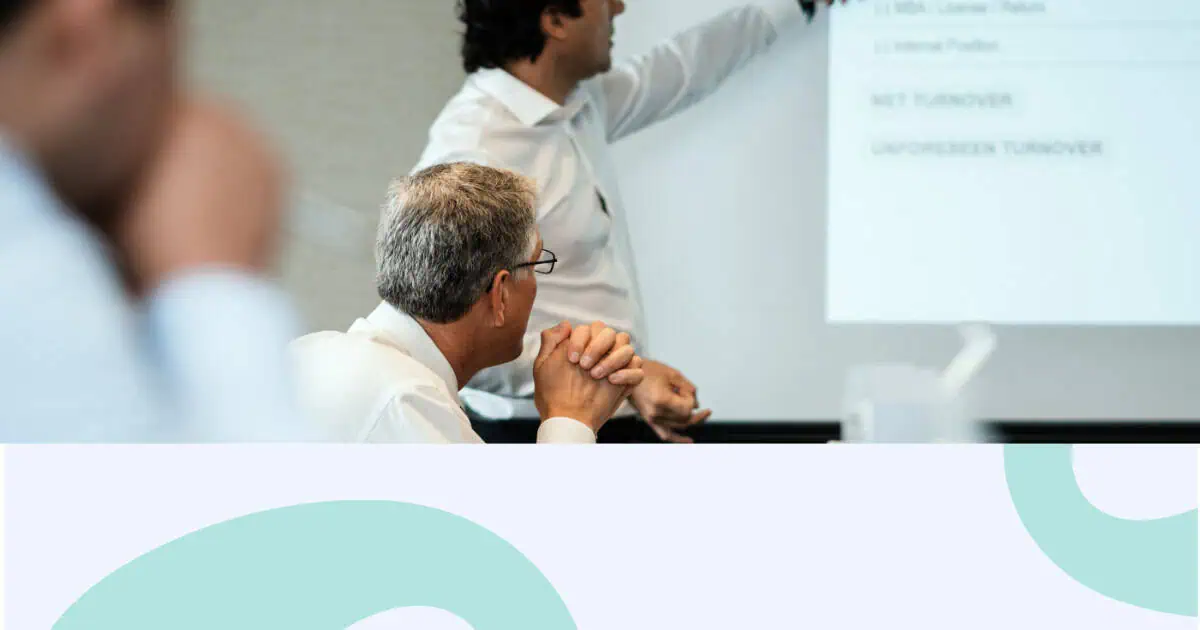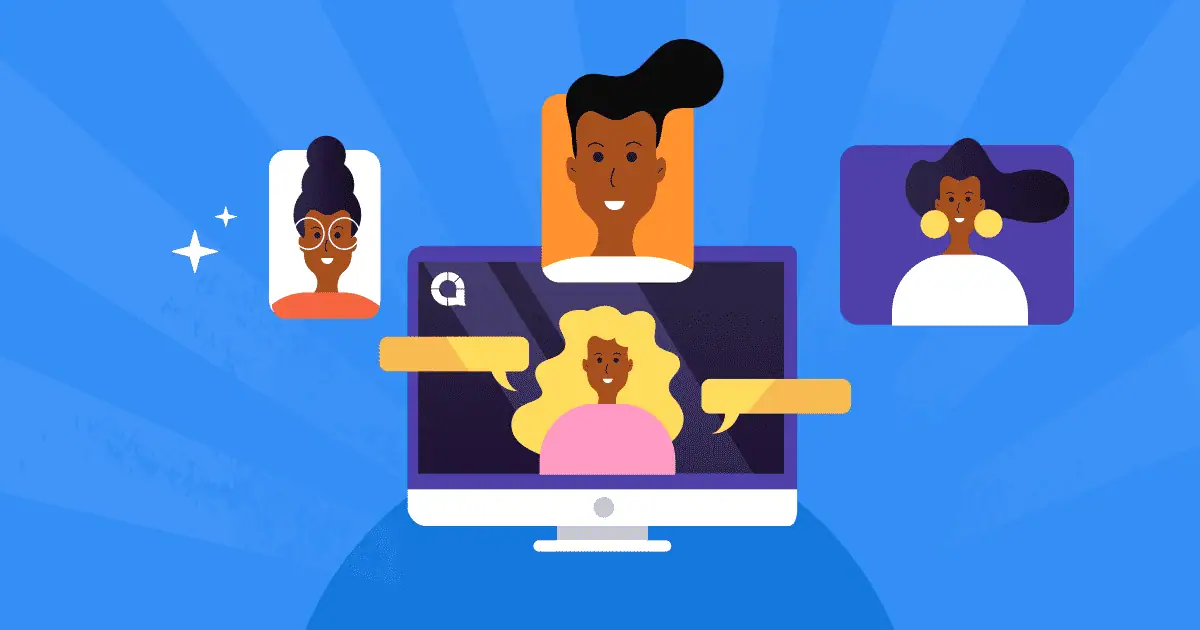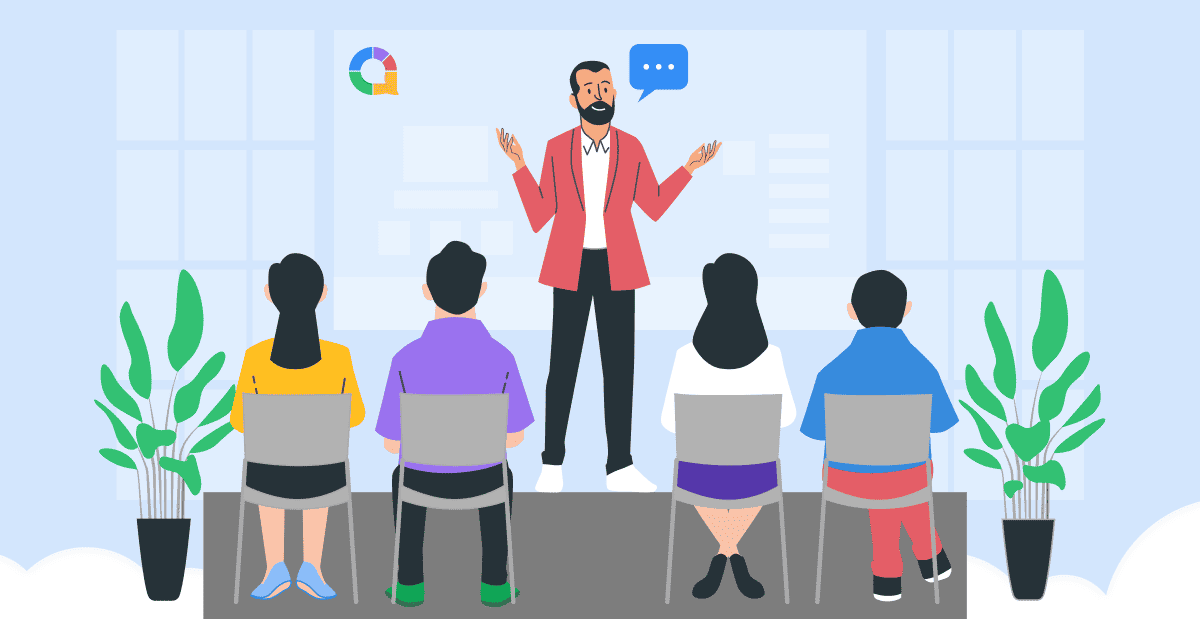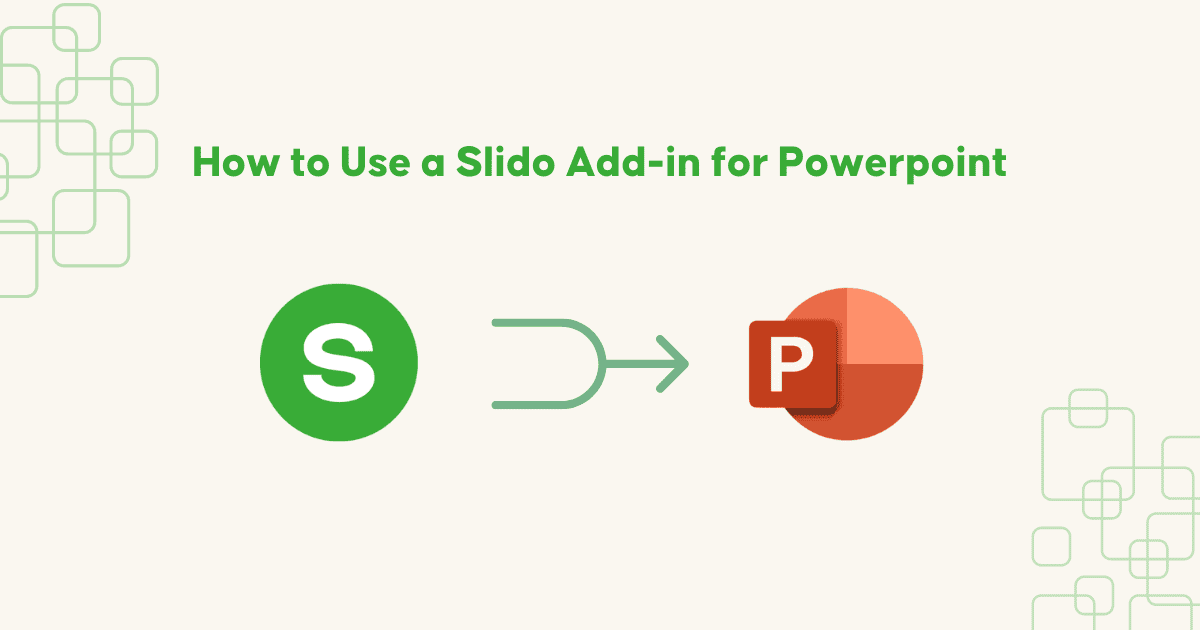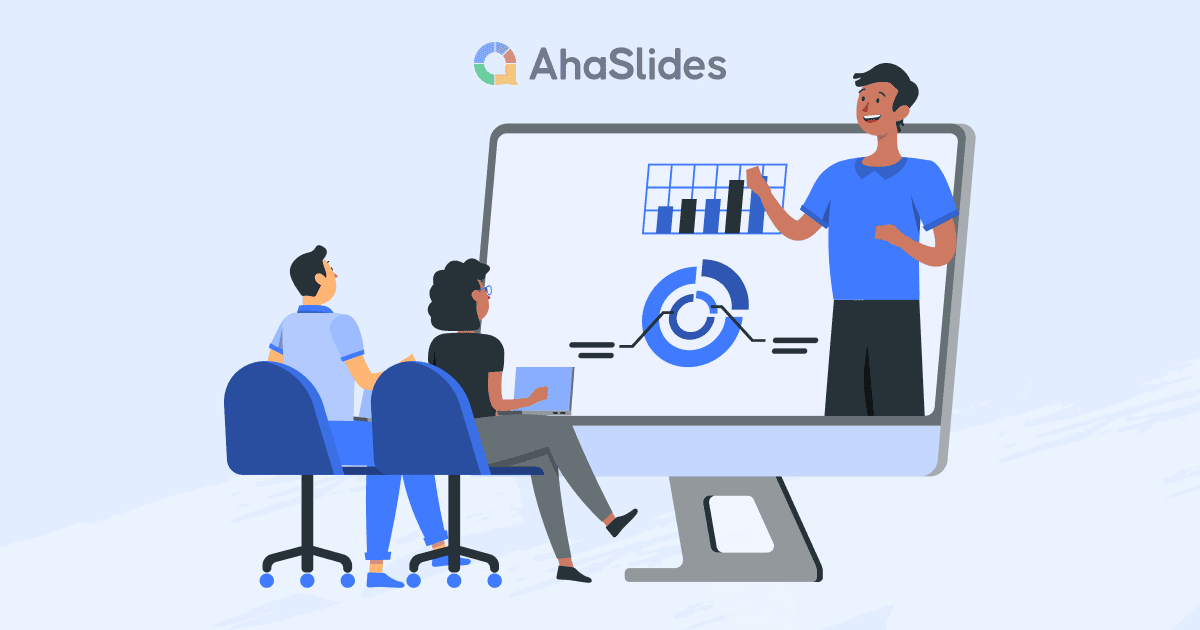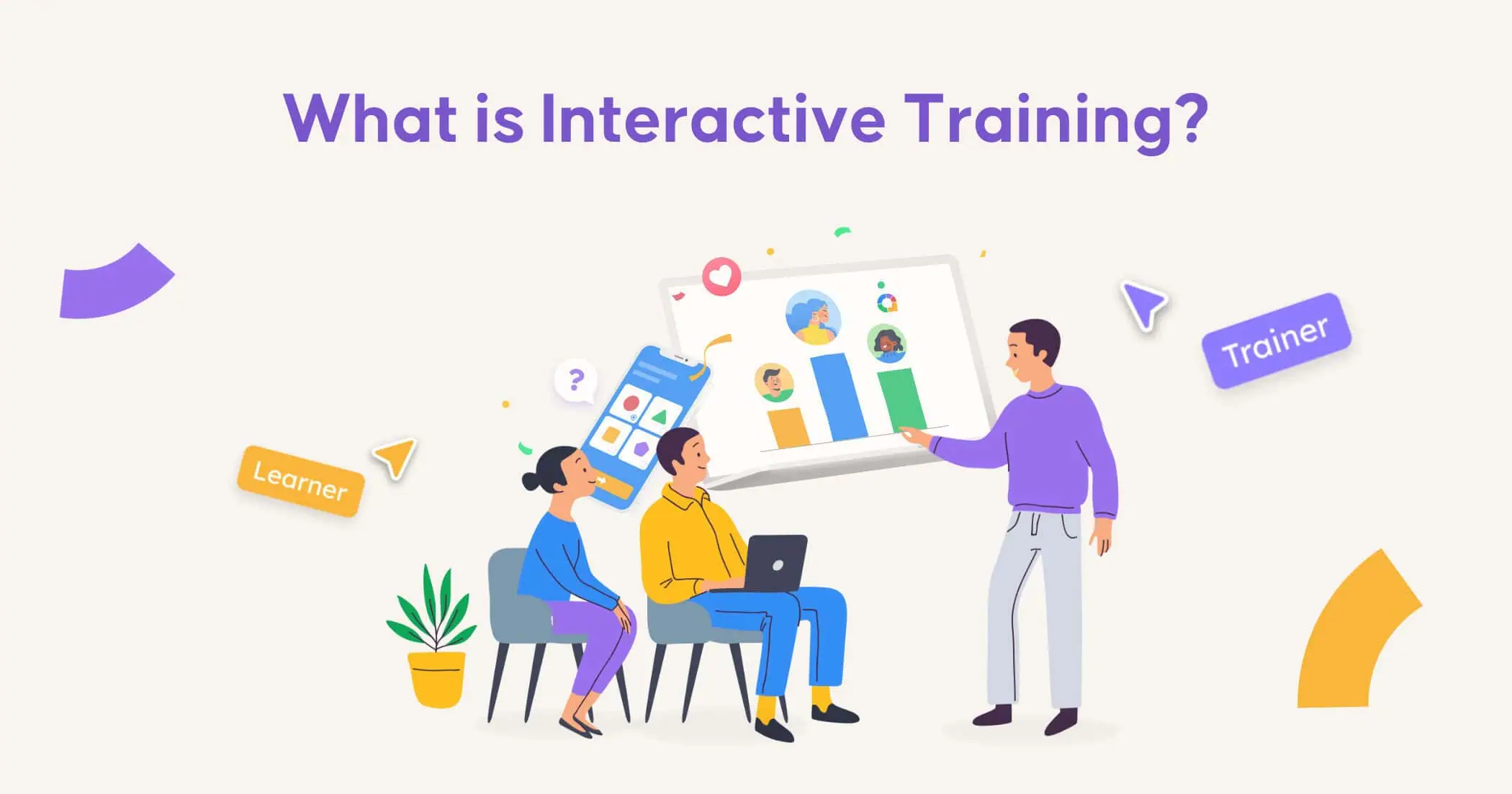You walk into a presentation room and your soul just... leaves. Half the people are secretly scrolling Instagram, someone's definitely buying stuff on Amazon, and that person up front? They're losing the battle with their eyelids. Meanwhile, the presenter is happily clicking through what feels like their millionth slide, completely clueless that they lost everyone ages ago. We've all been there, right? Both as the person desperately trying to stay awake and as the one talking to a room full of zombies.
But here's what gets me: we can't sit through a 20-minute presentation without our minds wandering, yet we'll scroll TikTok for three hours straight without even blinking. What's up with that? It's all about engagement. Our phones figured out something most presenters are still missing: when people can actually interact with what's happening, their brains light up. Simple as that.
And look, the data backs this up, engaged presentations just work better. According to research, learner and presenter satisfaction and engagement were higher in the interactive format, demonstrating that interactive presentations outperform traditional ones in professional contexts. People actually show up, they remember what you said, and they do something about it afterward. So why do we keep presenting like it's 1995? Let's dig into what the research tells us about why engagement in presentation isn't just a nice bonus anymore - it's everything.
Table of Contents
What happens when nobody's really listening
Before we dive into solutions, let's look at just how bad the problem really is. We've all been there—listening to a presentation wherein you can almost hear the collective mental checkout around the room. Everyone is nodding politely, mentally thinking about what movies they are going to watch or scrolling through TikTok under the table. Here's the harsh reality: most of what you're saying in those instances goes into thin air. Research has proven that individuals forget 90 % of what they hear within a week when they're not actively engaged.
Think about what that does to your organisation. All of that strategy effort where everyone was on the same page but then nothing happened? All of those expensive training initiatives that never stuck? All of those big flashy announcements that got lost in translation? That's the real cost of disengagement—not time squandered, but lost initiatives and opportunities that quietly die on the vine because nobody was ever on board.
And everything's gotten harder. Everyone's got a smartphone with alerts blaring. Half your audience is probably listening in from afar, and that makes it exceptionally simple to space out in your mind (or, you know, change tabs). We're all a bit ADHD now, constantly changing tasks and unable to focus on anything for longer than a few minutes.
And apart from that, people's expectations have changed. They're used to Netflix shows hooking them within the first 30 seconds, TikTok videos giving them instant value, and apps that respond to their every gesture. And they come and sit down to listen to your quarterly update presentation, and, well, let's just say the bar has been raised.
What happens when people actually care
But this is what you get when you do it right—when people are not just physically but actually involved:
They actually remember what you said. Not just the bullet points, but the why behind them. They're still talking about your ideas after the meeting ends. They send follow-up questions because they're genuinely curious, not confused.
Most importantly, they take action. Instead of sending those pesky follow-up messages with the inquiry "So what are we actually supposed to do now?", people leave knowing exactly what they need to do next - and they are disposed to do so.
Something magical happens in the room itself. People start to build on each other's suggestions. They bring some of their own history. They solve problems together instead of waiting for you to come up with all the answers.
Here's the thing
In a world where we're all drowning in information but famished for relationships, engagement isn't some trick of presentations - it's what it means between communication that works and communication that just takes up space.
Your listeners are betting on their most precious asset: their time. They could be doing literally anything else right now. The least you can do is make it worth their while.
26 Eye-opening statistics about audience engagement
Corporate training and employee development
- 93% of employees say well-planned training programs positively affect their engagement (Axonify)
- 90% of information is forgotten within a week when audiences aren't actively engaged (Whatfix)
- Only 30% of American employees feel engaged at work, yet companies with higher engagement have 48% fewer safety incidents (Safety Culture)
- 93% of organisations are concerned about employee retention, with learning opportunities being the number 1 retention strategy (LinkedIn Learning)
- 60% of workers started their own skills training external to their company's L&D programs, showing massive unmet demand for development (edX)
Education and academic institutions
- Between 25% and 54% of students didn't feel engaged at school in 2024 (Gallup)
- Interactive presentations increase student retention by 31 % when multiple senses are engaged (MDPI)
- Gamification, which involves incorporating game elements like points, badges, and leaderboards in the lesson, can increase student performance positively while boosting behavioural engagement (STETIC, IEEE)
- 67.7% reported that gamified learning content was more motivating than traditional courses (Taylor & Francis)
Healthcare and medical training
- Healthcare professionals rate themselves lowest as storytellers (6/10) and overall presenters (6/10) (National Library of Medicine)
- 74% of healthcare professionals use bullet points and text most, while only 51% incorporate videos in presentations (ResearchGate)
- 58% cite "lack of training on best practices" as the biggest barrier to better presentations (Taylor & Francis)
- 92% of patients expect personalised communication from their healthcare providers (Nice)
Events industry
- 87.1 % of organisers say at least half of their B2B events are in-person (Bizzabo)
- 70 % of events are now hybrid (Skift Meetings)
- 49% of marketers say audience engagement is the biggest factor in hosting successful events (Markletic)
- 64% of attendees say immersive experiences are the most important event element (Bizzabo)
Media and broadcasting companies
- Booths featuring interactive elements see 50% more engagement compared to static setups (American Image Displays)
- Interactive streaming features increase watch time by 27 % compared to on-demand videos (Pubnub)
Sports teams and leagues
- 43 % of Gen Z sports fans scroll social media while watching sports (Nielsen)
- The share of Americans watching live sports games on social media grew by 34 % between 2020 and 2024 (GWI)
Nonprofit organisations
- Fundraising campaigns centred on storytelling have been shown to generate a 50 % increase in donations compared to those focused solely on data (Maneva)
- Nonprofits that effectively use storytelling in their fundraising efforts have a donor retention rate of 45 %, compared to 27 % for organisations that do not focus on storytelling (CauseVox)
Retail and customer engagement
- Companies with robust omnichannel engagement retain 89% of customers, compared to 33% without it (Call Center Studio)
- Omnichannel customers shop 1.7 times more than single-channel customers (McKinsey)
- 89% of consumers switch to competitors after a poor customer service experience (Toluna)
Real-world engagement strategies from top organisations
Apple keynote events – presentation as a performance
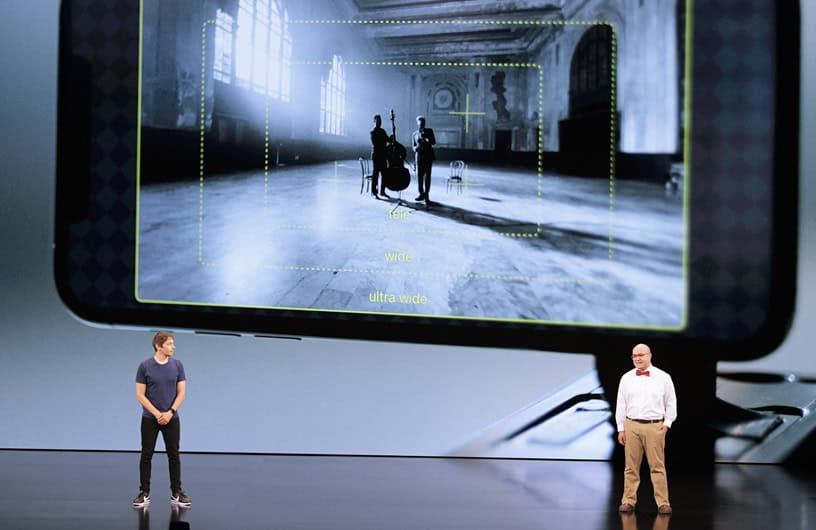
Apple's annual product keynotes, such as WWDC and iPhone launches, captivate millions worldwide by treating presentations as brand theatre, blending high production quality with cinematic visuals, sleek transitions, and tightly scripted narratives. The company maintains "meticulous attention to detail that goes into every aspect of the presentation," Apple Keynote: Unveiling Innovation and Excellence, building anticipation through layered reveals. The iconic "one more thing…" technique, pioneered by Steve Jobs, created the "pinnacle of this theatre" where "the address seemed to have ended, only for Jobs to return and unveil another product."
Apple's presentation approach includes minimalist slides with large visuals and minimal text, ensuring focus on one idea at a time. This strategy has demonstrated measurable impact - for example, Apple's 2019 iPhone event attracted 1.875 million live viewers on YouTube alone, not including those who watched through Apple TV or the Events website, meaning "actual live viewership was likely a good deal higher."
This approach has set a new standard for live business presentations emulated by countless tech brands.
Abu Dhabi University: from sleepy lectures to active learning
The challenge: ADU's Al Ain and Dubai campuses' director, Dr. Hamad Odhabi, noticed three key areas of concern: students were more engaged in phones than in lesson content, classrooms were not interactive with professors preferring one-way lectures, and the pandemic had created a need for better virtual learning technology.
The solution: In January 2021, Dr. Hamad began experimenting with AhaSlides, spending time mastering different slide types and finding new ways of teaching that would encourage student participation. After achieving good results, he created a demo video for other professors, which led to the official partnership between ADU and AhaSlides.
The results: Professors saw almost instant improvement in lesson participation, with students responding enthusiastically and the platform facilitating more general involvement by levelling the playing field.
- Immediate improvement in lesson participation across the board
- 4,000 live participants across all platforms
- 45,000 participant responses across all presentations
- 8,000 interactive slides created by faculty and students
Abu Dhabi University continues to use AhaSlides until now, and had conducted a study which revealed that AhaSlides significantly improved behavioural engagement (ResearchGate)
8 Strategies to build audience engagement effectively
Now that we know why engagement matters, here are the strategies that actually work, whether you're presenting in person or online:
1. Start with interactive ice-breakers within the first 2 minutes
Why it works: Research shows that attention lapses begin after an initial "settling in" period, with breaks occurring at 10-18 minutes into presentations. But here's the key - people decide whether they're going to mentally check out within the first few moments. If you don't grab them immediately, you're fighting an uphill battle for the entire presentation.
- In-person: use physical movement like "stand up if you've ever..." or have people introduce themselves to someone nearby. Create human chains or group formations based on responses to questions.
- Online: launch live polls or word clouds using tools like AhaSlides, Mentimeter, Slido, or built-in platform features. Use breakout rooms for quick 2-minute introductions or ask people to type responses in chat simultaneously.
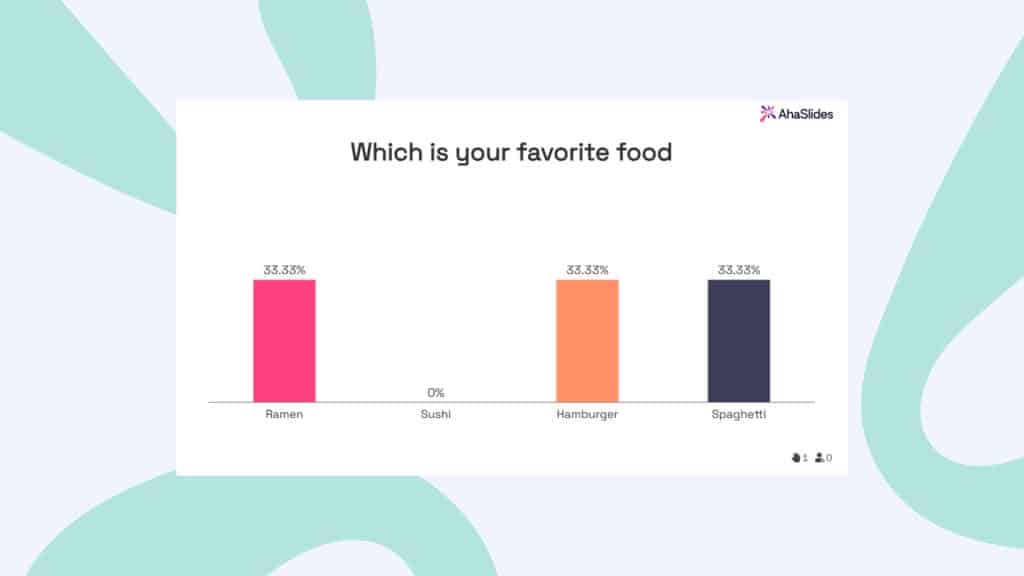
2. Master strategic attention resets every 10-15 minutes
Why it works: Gee Ranasinha, CEO and Founder at KEXINO, stressed that human attention lasts around 10 minutes and it's deeply set in our revolutionary trait. So if you're going longer, you need these resets.
- In-person: incorporate physical movement, have audience members change seats, do quick stretches, or engage in partner discussions. Use props, flipchart activities, or small group work.
- Online: switch between presentation modes - use polls, breakout rooms, screen sharing for collaborative documents, or ask participants to use reaction buttons/emojis. Change your background or move to a different location if possible.
3. Gamify with competitive elements
Why it works: Games trigger our brain's reward system, releasing dopamine when we compete, win, or make progress. Meaghan Maybee, Marketing Communications Specialist at pc/nametag, emphasises that "Interactive event activities like live Q&As, audience polls, and surveys for gathering feedback instantly make content feel more relevant to your audience. Trivia games or digital scavenger hunts can also gamify your event and excite your audience with something new. Lastly, using crowdsourced content (where you ask attendees to submit their own ideas or photos) is a great way to incorporate audience input in your presentation."
In-person: Create team challenges with visible scorekeeping on whiteboards. Use coloured cards for voting, room-based scavenger hunts, or trivia with prizes tossed to winners.
Online: Use platforms like Kahoot or AhaSlides to create points, badges, leaderboards, and team competitions with shared scoreboards. Make learning feel like playing.
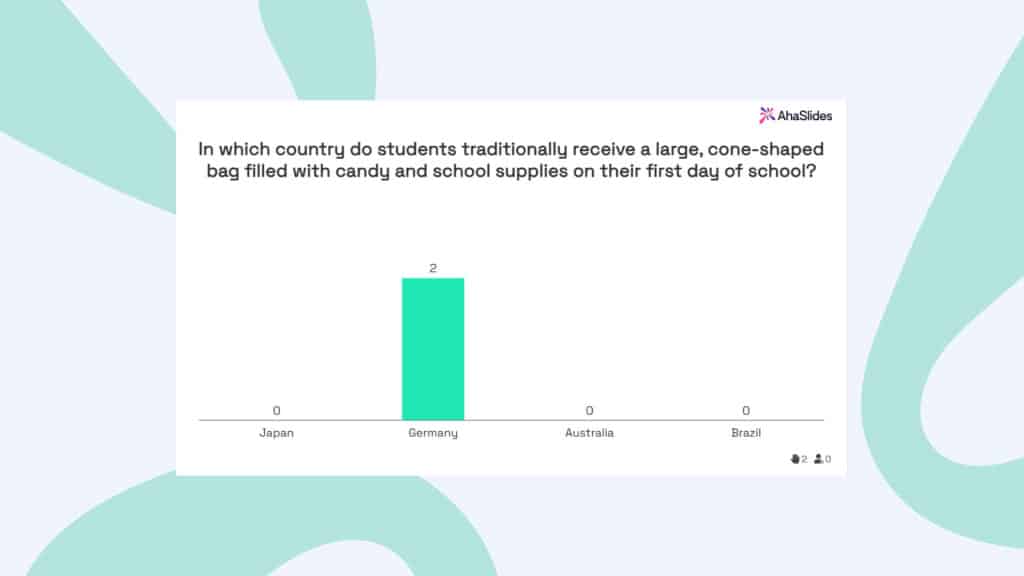
4. Use multi-modal interactive questioning
Why it works: Traditional Q&A sessions often fall flat because they create a high-risk environment where people fear looking stupid. Interactive questioning techniques lower the barriers to participation by giving people multiple ways to respond safely. When audiences can participate anonymously or in low-stakes ways, they're more likely to engage. Plus, the act of responding, whether physically or digitally, activates different parts of the brain, improving retention.
- In-person: combine verbal questions with physical responses (thumbs up/down, moving to different sides of the room), written responses on sticky notes, or small group discussions followed by report-outs.
- Online: layer questioning techniques by using chat responses, audio unmuting for verbal answers, polling for quick feedback, and annotation tools for collaborative input on shared screens.
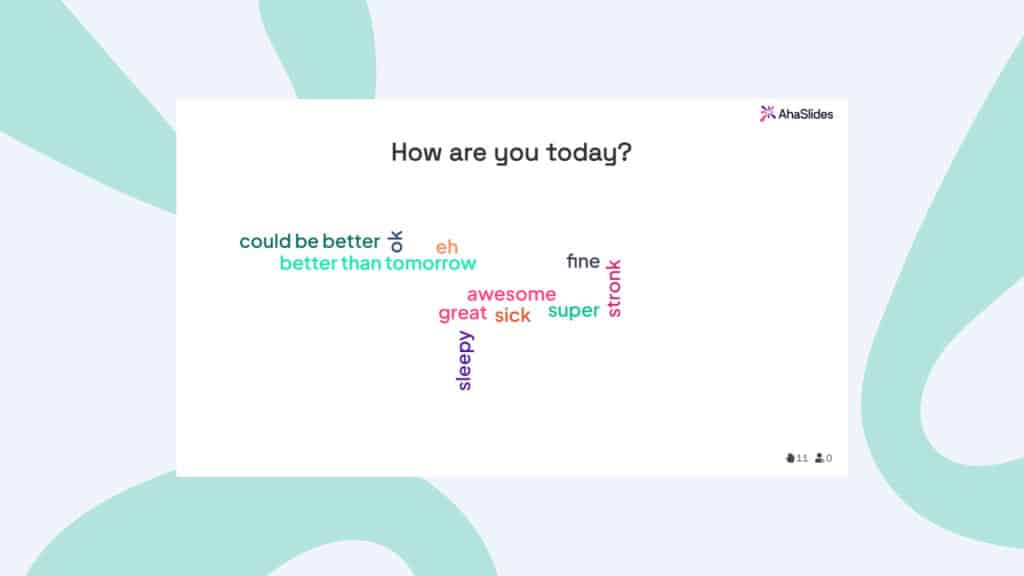
5. Create "Choose your own adventure" content paths
Why it works: This gives attendees a two-way conversational experience (versus talking “at” your audience from the stage). Your goal should be to make your audience feel like a part of your event and give them a deeper understanding of your presentation topic, which in turn leads to more satisfaction and positive feedback (Meghan Maybee, pc/nametag).
- In-person: use large format voting (coloured cards, hand raises, moving to room sections) to let the audience decide which topics to explore, case studies to examine, or problems to solve first.
- Online: utilise real-time polling to vote on content direction, use chat reactions to gauge interest levels, or create clickable presentation branches where audience votes determine the next slides.
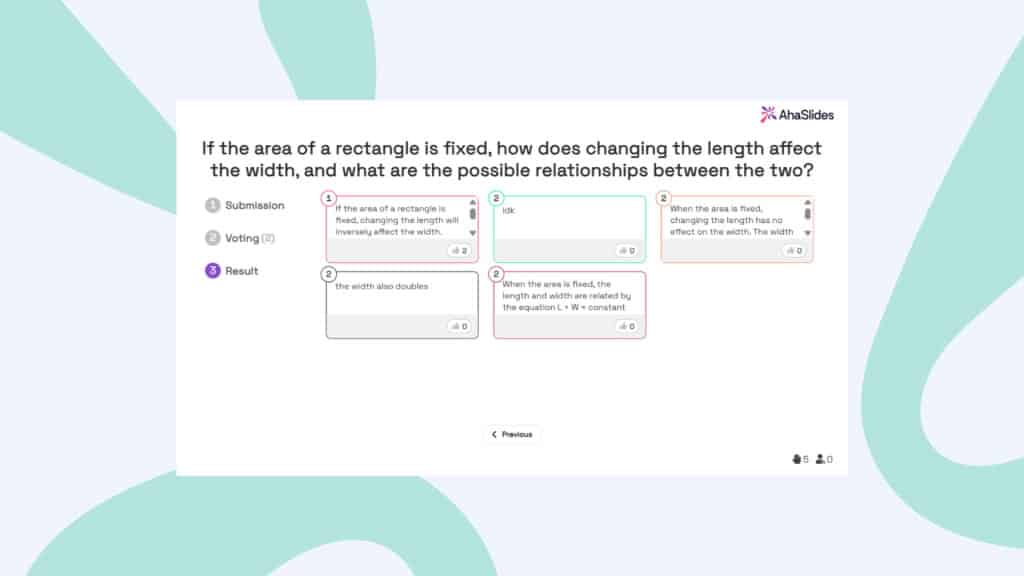
6. Implement continuous feedback loops
Why it works: Feedback loops serve two critical functions: they keep you calibrated to your audience's needs, and they keep your audience actively processing information. When people know they'll be asked to respond or react, they listen more carefully. It's like the difference between watching a movie and being a film critic, when you know you'll need to give feedback, you pay closer attention to details.
- In-person: use gesture-based check-ins (energy level hand signals), quick partner shares followed by popcorn-style reporting, or physical feedback stations around the room.
- Online: use clickable buttons, polls, quizzes, discussions, multimedia elements, animations, transitions and maintain active chat monitoring. Create designated times for unmuting and verbal feedback or use reaction features for continuous sentiment tracking.
7. Tell stories that invite participation
Why it works: Stories activate multiple areas of the brain simultaneously, the language centers, the sensory cortex, and the motor cortex when we imagine actions. When you add participation to storytelling, you're creating what neuroscientists call "embodied cognition", the audience doesn't just hear the story, they experience it. This creates deeper neural pathways and stronger memories than facts alone.
- In-person: have audience members contribute to stories by shouting out words, acting out scenarios, or sharing related experiences. Use physical props or costumes to make stories immersive.
- Online: use collaborative storytelling where participants add elements via chat, share personal examples through unmuting, or contribute to shared documents that build narratives together. Screen share user-generated content when appropriate.
8. End with collaborative action commitment
Why it works: Business coach Bob Proctor emphasises that "accountability is the glue that ties commitment to the result." By creating structures for people to commit to specific actions and be accountable to others, you're not just ending your presentation—you're empowering your audience to respond and take ownership of their next steps.
- In-person: use gallery walks where people write commitments on flipcharts, accountability partner exchanges with contact information, or group pledges with physical gestures.
- Online: create shared digital whiteboards (Miro, Mural, Jamboard) for action planning, use breakout rooms for accountability partnerships with follow-up contact exchange, or have participants type commitments in chat for public accountability.
Wrapping Up
You already know what boring, unengaged presentations/meetings/events feel like. You've sat through them, you've probably given them, and you know they don't work.
The tools and strategies exist. The research is clear. The only question left is: are you going to keep presenting like it's 1995, or are you ready to actually connect with your audience?
Stop talking at people. Start engaging with them. Pick ONE strategy from this list, try it in your next presentation and tell us how it goes!

